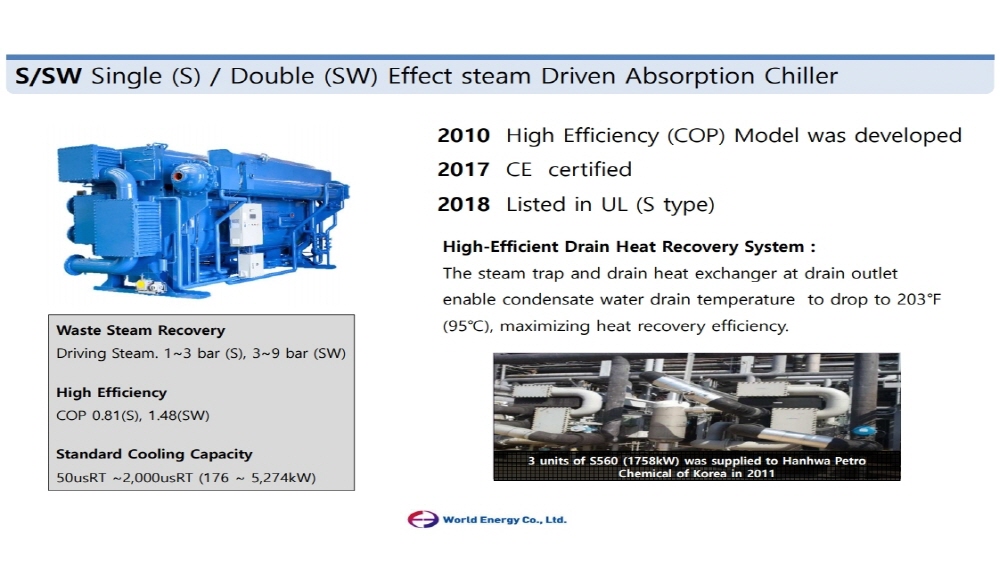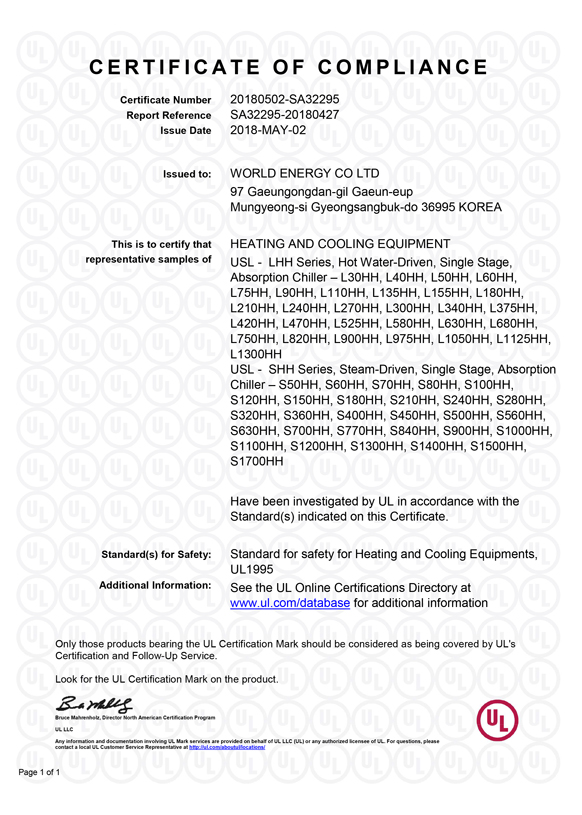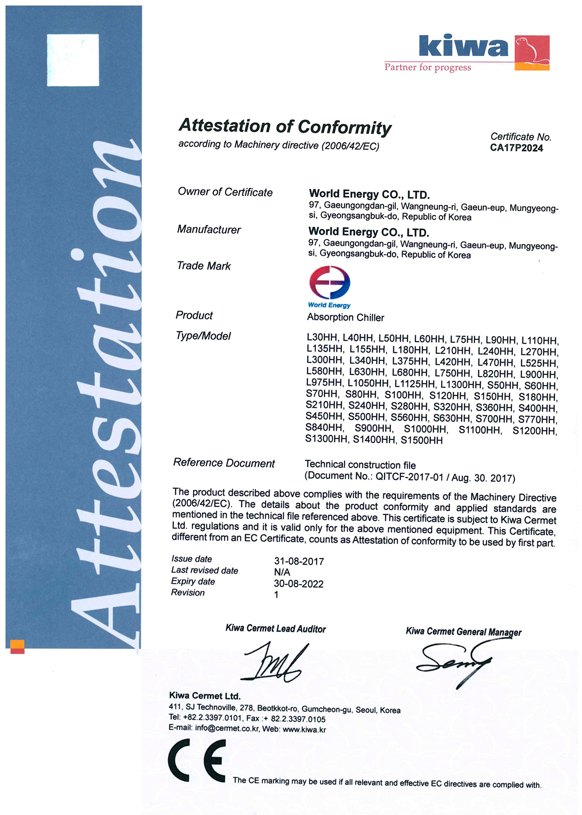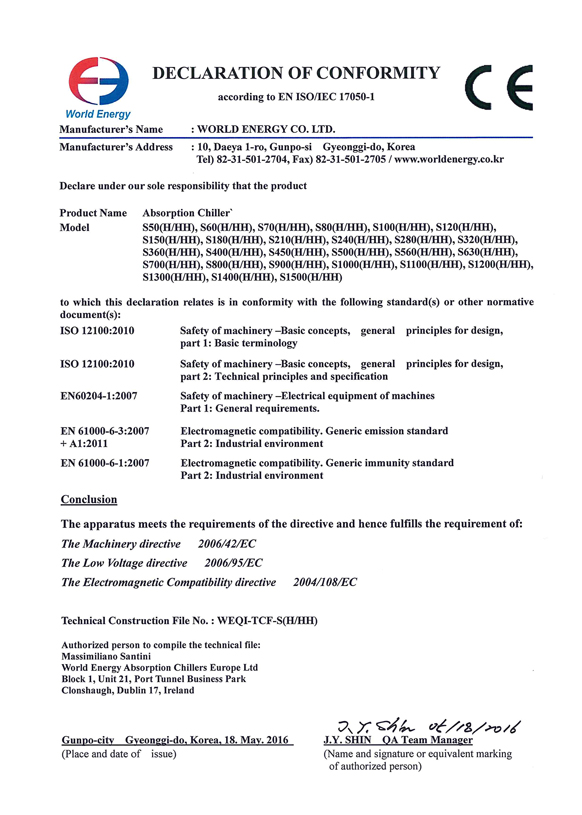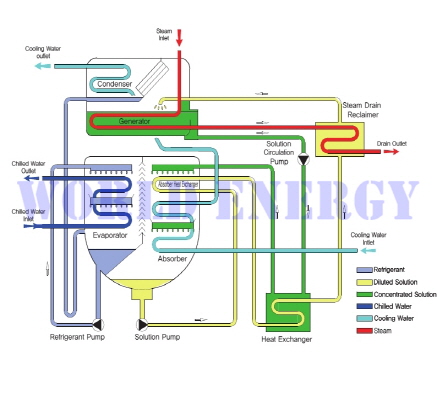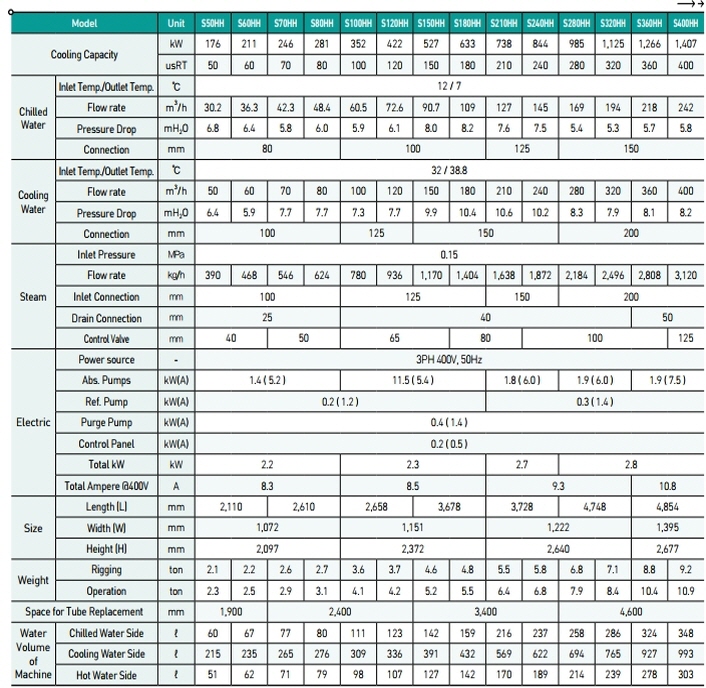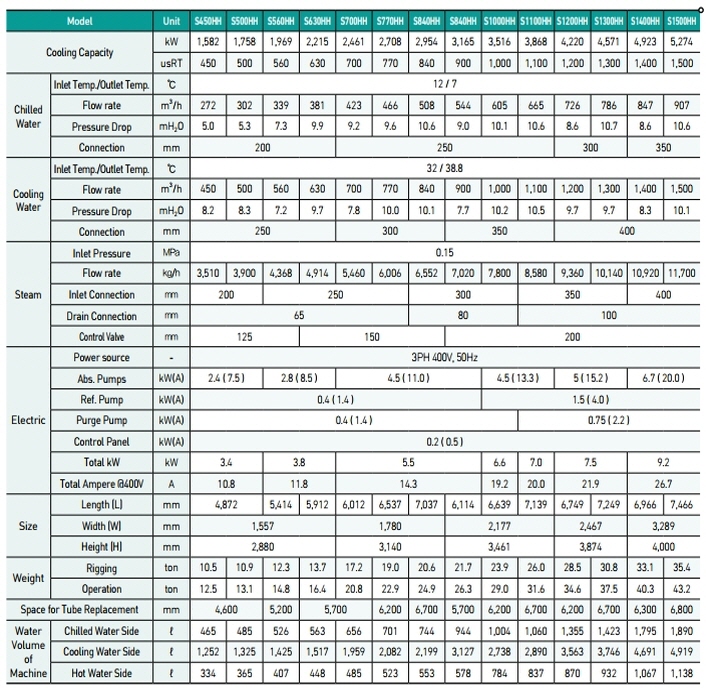S
Single Effect Steam Driven Absorption Chiller

50~2,000RT (176~7,033kW)
Steam Pressure: 0~2barG
Make use of low-quality waste steam or gas
Recover heat from very low-pressure steam down to 0 atm, and any kind of waste gas which has latent heat
Highest COP
Achieved COP 0.81 even with the single effect refrigeration cycle
Reference
Italy TELECOM ACILIA, Korea Hanwha Chemical (HCC Yeocheon2 OA), Taiwan CHANG CHUN PETROCHEMICAL, USA North Shore Towers
Construction of a high-efficiency steam-type single effect absorption chiller cycle
Refrigerants evaporate from an evaporator and cool cold water flowing inside of evaporator tubes. Refrigerants evaporated at this time go to an absorber and get absorbed into a thick absorption liquid (a concentrated solution) flowing down from a generator.
The concentrated solution absorbs refrigerant steam and becomes an absorption liquid (a dilute solution). Absorption heat generated at this time is conveyed to cooling water.
Absorption liquid diluted (a dilute solution) at an absorber goes to a generator through a solution heat exchanger and a heat retriever (a steam condensate heat exchanger). Steam gets condensed at the generator and heats this dilute solution generated refrigerant steam.
Steam which isn’t condensed and re-evaporated steam generated due to a pressure gap gets completely condensed at a heat retriever (a steam condensate heat exchanger) and is discharged through a drain outlet. At this time, the temperature of condensed steam becomes lower than 90℃.
The dilute solution becomes a thick absorption liquid (a concentrated solution) at the generator and returns to the absorber through the heat exchanger.
Refrigerant steam generated from the generator gets condensed outside of condenser tubes and flows down to the evaporator. Cooling water absorbs heat generated when refrigerant gas gets condensed at condenser tubes.
